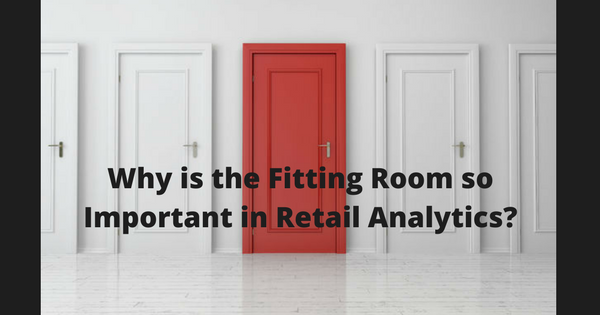Relatively speaking, the fitting room is one of the smallest areas of any retail store. These unobtrusive rooms are often tucked away in the back, and as a retailer, you could easily forget all about them. That is, until you understand the importance of this small-but-mighty area of the store.
For example, did you know that fitting rooms are key to increased sales and decreased returns? Let’s look at why the fitting room is crucial to retail performance.
[Tweet “The small-but-mighty fitting room is crucial to #retail performance.”]
Retail Purchases Begin and End in the Fitting Room
 Whether it’s because they need an outfit for an event or a special occasion, or just because they feel ready for something new, people want clothes that make them feel good.
Whether it’s because they need an outfit for an event or a special occasion, or just because they feel ready for something new, people want clothes that make them feel good.
A promotion or a clever window display might get a shopper in the door, and the selection and pricing might convince them to pick an item up off the rack. However, until they know how that particular piece of clothing makes them feel when they’re wearing it, no sale is a done deal.
All apparel purchases have one thing in common: “How does this make me feel?”
[Tweet “All apparel purchases have one thing in common: ‘How does this make me feel?’“]
And it’s not just the way the clothing makes them feel. There’s also the whole shopping experience. Your associates have the opportunity to make personal connections with customers who visit your physical stores. For instance, when an associate knows that a customer is shopping for clothes for a beach vacation, they can share the customer’s excitement about the upcoming trip and make better upsell and cross-sell suggestions.
(Upselling and cross-selling is one reason why, when a customer has used a call button to get personalized service in the fitting room, there is a three-fold increase in the size of their basket.)
Well-Managed Fitting Rooms Lead to Decreased Returns
For a moment, put yourself in the shoes of your customer. Have you ever been frustrated when you’re ready to make your purchase decision – i.e., ready to try something on? Long fitting room lines, difficulty finding a sales associate, or issues with the physical comfort of the room are some common barriers.
 When faced with such barriers, what do YOU do? If it’s a store that’s relatively convenient to get to, you may decide that the ease of a return means that you’ll make a purchase before you try on the clothing.
When faced with such barriers, what do YOU do? If it’s a store that’s relatively convenient to get to, you may decide that the ease of a return means that you’ll make a purchase before you try on the clothing.
This is great when you’re the customer, but not as a retailer. Items that don’t make it to the fitting room inevitably have higher return rates. Merchandise returns cost around $270 billion dollars every year in lost sales.
Given what we know about the way fitting rooms affect return rates, there is something you can do about this.
[Tweet “Returned merchandise costs #retailers $270B every year! Here’s how to reduce returns”]
The fitting room is one area where traditional retailers maintain a significant edge over eCommerce. Online retailers experience return rates of nearly one in five due to issues with fit. But in a brick-and-mortar store, the ability to see and touch clothes results in return rates that are less than one in ten. When a customer has tried their purchase on first, return rates are even lower.
Fitting Room Metrics Help Motivate Staff
Since most associates work at least partly on commission, they’re clearly incentivized to serve customers well. Fitting room technology provides metrics that associates – and management – can use to get feedback on how well they’re doing.
When your fitting rooms are equipped with such technology, and you’re collecting statistics on how well your fitting rooms are being serviced (e.g., how long it takes staff to respond to fitting room calls), you’re not just helping to ensure excellent service for customers. You’re identifying opportunities for training and development, and receiving concrete metrics to determine which sales associates are superstars, and which ones have some room for improvement.
Conclusion
When it comes to increasing sales, decreasing returns, and motivating sales associates, there’s a major source of opportunity in the humble fitting room. You can begin to improve all these areas with a fitting room system that provides access to key fitting room performance indicators.
The cost of not having such a system, or the associated metrics, can be significant, as it includes the burden of returns as well as the cost of lost sales.
How to Collect Retail Data, and What to Do with It
[xyz-ihs snippet=”TOFU2-Retail-Analytics”]
